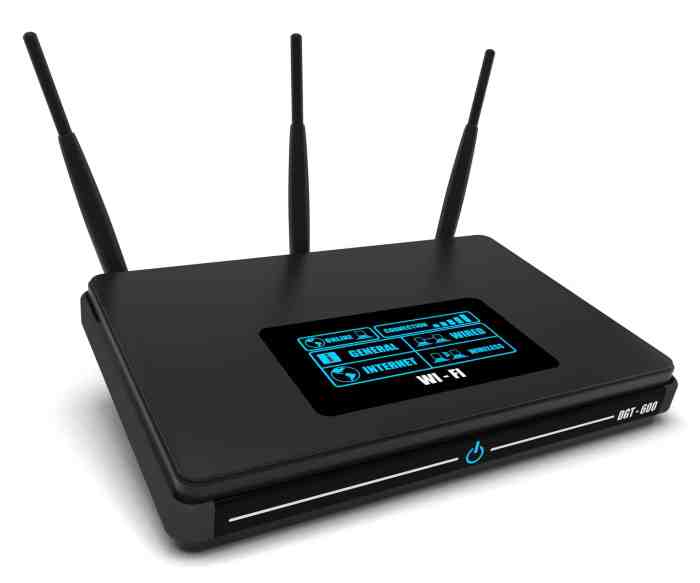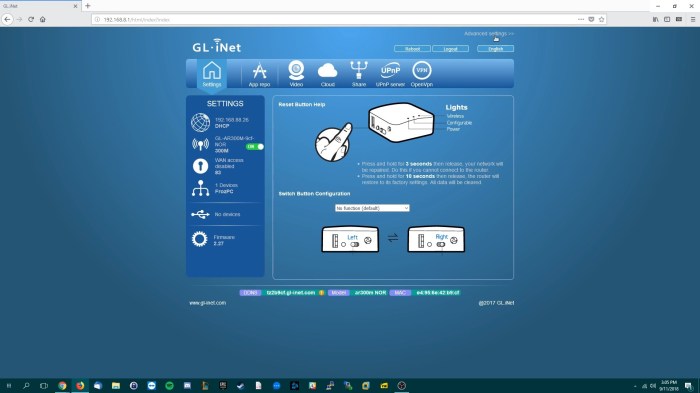ssh.sshslowdns.com – In the realm of embedded operating systems, OpenWrt stands as a beacon of flexibility, security, and community-driven innovation. This open-source firmware empowers users with unparalleled control over their network devices, unlocking a world of customization and advanced features.
With its vast array of capabilities and unwavering community support, OpenWrt has become the go-to choice for enthusiasts, tinkerers, and professionals alike. Whether you seek to enhance your home network, optimize your small business infrastructure, or explore the depths of network management, OpenWrt offers an empowering and rewarding experience.
Overview of OpenWrt
OpenWrt is an open-source embedded operating system based on Linux, designed specifically for embedded devices, such as routers and access points. It provides a highly customizable and extensible platform for users to tailor their network devices to their specific needs.OpenWrt’s
open-source nature allows for extensive community involvement, with developers contributing to the project’s ongoing development and maintenance. This collaborative approach fosters a vibrant ecosystem of plugins, add-ons, and community-developed packages, enabling users to enhance the functionality of their devices beyond the default capabilities.
Features and Capabilities
OpenWrt boasts an extensive array of features, empowering users with unparalleled customization and flexibility. Its open-source nature and vast community support enable it to run on a wide range of hardware, from small routers to powerful enterprise-grade devices.
Customizability and Flexibility
OpenWrt grants users complete control over their network configuration, allowing them to tailor it to their specific needs. The modular design enables the addition or removal of packages, giving users the ability to create a tailored system. The intuitive web interface and command-line tools provide a comprehensive and user-friendly experience.
Hardware Support
OpenWrt’s extensive hardware compatibility ensures that it can run on a wide range of devices, including popular models from Asus, TP-Link, and Netgear. This versatility makes it an ideal solution for both home and business environments, allowing users to leverage their existing hardware.
Advanced Networking Features
OpenWrt offers advanced networking capabilities, including support for IPv6, Quality of Service (QoS), and VPNs. The built-in firewall provides robust protection against cyber threats, while the traffic shaping tools allow users to optimize network performance for specific applications.
Community Support
OpenWrt benefits from a vibrant and active community that provides extensive documentation, support forums, and development contributions. This community-driven ecosystem ensures that users have access to the latest features and security updates, fostering a collaborative environment for continuous improvement.
Installation and Configuration

Installing and configuring OpenWrt involves a few steps, depending on the specific device you’re using. Once installed, you can customize settings and configure the router to meet your network requirements.
Installation
Follow the official OpenWrt installation guide for detailed instructions specific to your device. The process typically involves flashing the OpenWrt firmware onto your router’s flash memory, which replaces the original firmware.
Configuration
After installation, access the OpenWrt web interface (usually at 192.168.1.1) to configure settings. The interface provides various options, including:
- Network settings: Configure IP addresses, DHCP, DNS, and firewall rules.
- Wireless settings: Set up Wi-Fi networks, security protocols, and channel configurations.
- System settings: Manage device updates, backup/restore, and time zone settings.
- Services: Enable or disable additional services such as VPN, DNS caching, and traffic monitoring.
- Advanced settings: Access low-level configuration options for experienced users.
Network Management

OpenWrt provides comprehensive capabilities for managing and configuring network settings, empowering users with granular control over their network infrastructure.Routing, firewall, and wireless settings can be easily configured through the intuitive web interface or the command line. The routing table can be customized to define network paths, while the firewall can be configured to enforce security policies and protect against malicious traffic.
Wireless settings can be fine-tuned to optimize signal strength, channel selection, and encryption protocols, ensuring reliable and secure wireless connectivity.
Routing
OpenWrt supports advanced routing features such as static routes, policy-based routing, and routing protocols like RIP and OSPF. Static routes allow for manual configuration of network paths, providing flexibility and control over traffic flow. Policy-based routing enables granular control over how traffic is forwarded based on criteria such as source IP address, destination IP address, or port number.
Routing protocols facilitate dynamic routing between multiple networks, optimizing traffic flow and reducing latency.
Firewall
The built-in firewall in OpenWrt provides robust protection against network attacks and unauthorized access. Firewall rules can be defined to filter traffic based on various criteria, including source and destination IP addresses, ports, and protocols. Advanced features such as stateful packet inspection, port forwarding, and traffic shaping allow for fine-grained control over network traffic.
Wireless
OpenWrt offers extensive wireless configuration options to optimize Wi-Fi performance and security. Wireless networks can be configured to operate on specific channels, adjust transmit power, and utilize various encryption protocols such as WPA2 and WPA3. Advanced features like wireless scheduling, guest networks, and mesh networking provide flexibility and customization options for diverse wireless environments.
Package Management
OpenWrt uses the opkg package management system, which allows you to install, update, and remove packages from your router. Packages are pre-compiled software packages that contain the necessary files and dependencies to run a specific application or service.
Installing Packages
To install a package, use the following command:“`opkg install “`
For example, to install the luci web interface, use the following command:
“` opkg install luci “`
Updating Packages
To update all installed packages, use the following command:
“` opkg update opkg upgrade “`
Removing Packages
To remove a package, use the following command:
“` opkg remove “`
For example, to remove the luci web interface, use the following command:
“` opkg remove luci “`
Advanced Features
OpenWrt offers a wide range of advanced features that empower users to customize their networks and optimize performance. These features include:
VPN Support
Virtual Private Networks (VPNs) encrypt internet traffic, providing secure and private connections. OpenWrt supports various VPN protocols, such as OpenVPN, WireGuard, and IPsec, allowing users to establish secure connections to remote networks, protect online privacy, and bypass geo-restrictions.
For instance, a remote worker can use a VPN to securely access their company’s network from a public Wi-Fi hotspot, ensuring the confidentiality of sensitive data.
Traffic Shaping
Traffic shaping allows users to prioritize and control the flow of network traffic. OpenWrt’s advanced traffic shaping capabilities enable users to allocate bandwidth, limit the speed of specific applications or devices, and prioritize traffic based on criteria such as IP address, port, or protocol.
This feature is particularly useful in environments where bandwidth is limited, such as in a home network with multiple devices competing for internet access. By prioritizing essential applications like video conferencing or online gaming, users can ensure a smooth and lag-free experience.
Quality of Service (QoS)
QoS mechanisms in OpenWrt provide granular control over network traffic, allowing users to define specific rules for prioritizing and managing traffic based on various parameters. This enables users to optimize network performance for specific applications or services.
For example, in a network with multiple users and devices, a QoS rule can be implemented to prioritize bandwidth for video streaming applications, ensuring a seamless viewing experience while other devices may use less bandwidth for less critical tasks.
Security and Privacy

OpenWrt offers robust security and privacy features to protect your network and data. It includes a comprehensive firewall, intrusion detection system, and encryption capabilities.
The firewall allows you to define rules to control incoming and outgoing traffic, blocking unauthorized access. The intrusion detection system (IDS) monitors network traffic for suspicious activities and alerts you to potential threats. Encryption protects your data from eavesdropping by encrypting network communications.
Firewall Configuration
- Configure firewall zones to define trusted and untrusted networks.
- Create firewall rules to allow or deny traffic based on source, destination, port, and protocol.
- Enable port forwarding to allow specific services to be accessible from the internet.
Intrusion Detection
- Enable IDS to monitor network traffic for known attack signatures.
- Configure IDS alerts to receive notifications of potential threats.
- Review IDS logs to identify and mitigate security incidents.
Encryption
- Configure WPA2 or WPA3 encryption for your wireless network to prevent unauthorized access.
- Use VPN (Virtual Private Network) to encrypt internet traffic and protect your privacy.
- Enable SSL/TLS encryption for web servers and other network services to protect data in transit.
By implementing these security measures, OpenWrt provides a secure and private network environment, protecting your devices and data from unauthorized access, malware, and other threats.
Community and Support
OpenWrt boasts a vibrant and dedicated community that actively contributes to its development and provides support to users. The community fosters a collaborative environment where users can share knowledge, troubleshoot issues, and contribute to the project’s evolution.
Documentation and Resources
OpenWrt offers comprehensive documentation and resources to assist users. The official website provides detailed user guides, tutorials, and FAQs. Additionally, there are numerous community-created resources, such as wikis, forums, and mailing lists, where users can find answers to their questions and connect with other members of the community.
Hardware Compatibility
OpenWrt supports a wide range of hardware devices, from popular routers to specialized embedded systems. It supports various architectures, chipsets, and peripherals, enabling users to repurpose old devices or build custom network solutions.
Supported Architectures
OpenWrt supports multiple processor architectures, including:
- ARM (32-bit and 64-bit)
- MIPS
- x86
- PowerPC
Supported Chipsets
OpenWrt supports a vast number of chipsets from various manufacturers, including:
- Broadcom
- Mediatek
- Qualcomm
- Realtek
- Marvell
Supported Peripherals
OpenWrt also supports various peripherals, such as:
- Wi-Fi cards
- Ethernet ports
- USB ports
- Serial ports
- GPIO pins
Comparison with Other Operating Systems
OpenWrt stands out among embedded operating systems due to its unique strengths and features.
Compared to proprietary firmware, OpenWrt offers greater flexibility, customization, and control over the router’s functionality. It empowers users to optimize network performance, enhance security, and integrate custom applications.